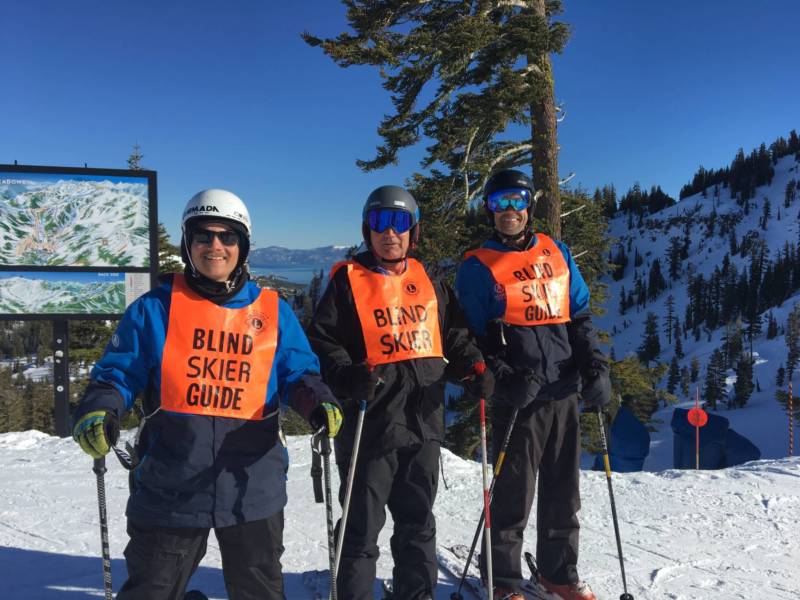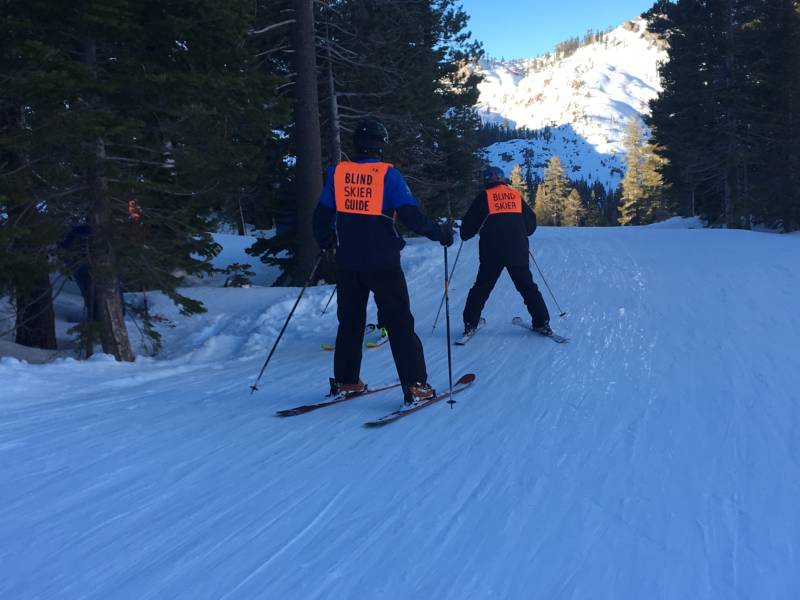Julius Schrem loved to ski when he was younger, although he wasn’t much into turning. He would bomb down the hills as fast as possible. He lost his leg in 1986 while deployed with the U.S. military in El Salvador. He was always an active guy, and losing his leg was devastating. Schrem thought he’d never ski again.
“I never thought I’d do anything again,” he said, “I was totally bummed out.”
But for the last few years, Schrem has been hitting the slopes with the help of the Achieve Tahoe program at Alpine Meadows ski resort. It helps skiers with a range of disabilities: Some have cerebral palsy or Down syndrome, and others have lost a limb. With all the snow this year, the program has welcomed new and seasoned skiers from all over the state.
On a recent day, Schrem headed out to ski with the help of Ryan Petherbridge, one of the guides in the program. Petherbridge helped Schrem adjust his leg prosthetic. It’s specifically designed for skiing, but it had a little too much air pressure the last time they went out.
“Well, the first day was pretty bad with Ryan,” Schrem said, “I kept falling all the time. Leg kept on coming off.”


